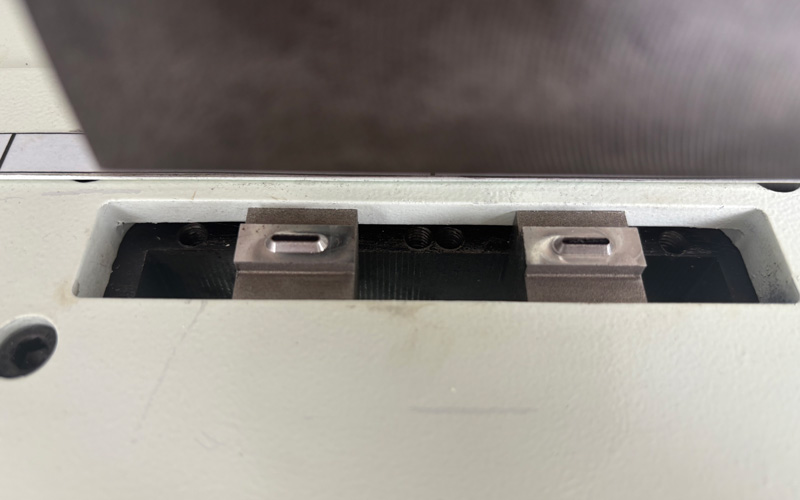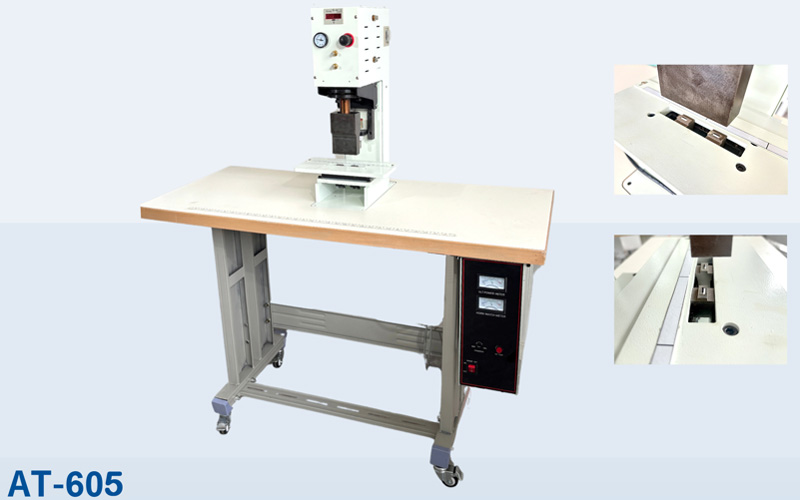In modern garment and textile manufacturing, efficiency and precision are the cornerstones of a successful production line. When it comes to punching buttonholes—especially on delicate or synthetic fabrics—ultrasonic button holes punching machines have emerged as the gold standard. These machines offer high-speed, non-fraying, and clean cutting performance by using ultrasonic vibrations rather than mechanical force or heat.
But how do you choose the right ultrasonic button holes punching machine for your specific production needs?
In this comprehensive guide, we will walk you through everything you need to know—from understanding how these machines work, to evaluating features, specifications, and considerations for purchase and integration into your production line.
What Is an Ultrasonic Button Holes Punching Machine?
An ultrasonic button holes punching machine uses high-frequency ultrasonic vibrations (typically 20kHz to 35kHz) to melt and cut fabric fibers cleanly and precisely. Unlike traditional mechanical cutting, which relies on blades and may cause fraying or inconsistent edges, ultrasonic cutting melts the fabric edges during the punching process, resulting in sealed, fray-free buttonholes.
Key Benefits:
No fraying at the edges
High cutting accuracy
Reduced material waste
Speed and automation for mass production
Minimal maintenance (no blades to sharpen or replace)
Ultrasonic punching machines are especially effective on synthetic fabrics like polyester, nylon, and blended fibers commonly used in sportswear, lingerie, and fashion items.
Why Choosing the Right Machine Matters
Not all ultrasonic button holes punching machines are created equal. Choosing a suboptimal machine could result in:
Inconsistent hole size or spacing
Fabric damage due to incorrect frequency or pressure
Reduced production efficiency
Frequent downtime or maintenance
Unnecessary energy consumption
That’s why selecting the right ultrasonic buttonholes punching machine tailored to your needs is crucial. Let’s explore how to do that.
Step 1: Understand Your Production Requirements
Before even looking at machines, you must thoroughly analyze your production needs. Consider the following:
1. Fabric Types
Are you working with lightweight synthetics, thick coated materials, or delicate blends? Each material has a different tolerance for ultrasonic energy. Softer or thinner fabrics require machines with lower power or adjustable amplitude settings.
2. Buttonhole Dimensions
Do you require standard-sized buttonholes or custom sizes? Choose a machine that allows flexibility in die mold designs or punching formats.
3. Production Volume
Is your factory running 24/7 high-volume orders, or are you fulfilling small batches? For large-scale operations, opt for machines that offer multi-head systems, faster cycle times, and conveyor integration.
4. Integration With Current Line
Will the machine be standalone or integrated into an automated line? If integrated, make sure it supports PLC control systems, conveyor syncing, and is compatible with your existing automation infrastructure.

Step 2: Evaluate Key Machine Specifications
Once your production needs are clear, focus on the technical specifications that influence machine performance.
1. Ultrasonic Frequency
Most machines operate at 20kHz to 35kHz. Lower frequencies offer higher power and are better for thick materials, while higher frequencies are ideal for fine, delicate fabrics.
2. Power Output
Measured in watts (typically 800W to 2000W). Higher wattage machines deliver more consistent results for high-speed, heavy-duty usage.
3. Punching Precision
Look for machines with ±0.1mm accuracy for consistent buttonhole placement. Servo motors and intelligent sensors improve cutting precision.
4. Cutting Speed
Speed is measured in cycles per minute. High-speed models can achieve 30–60 punches per minute, ideal for mass production.
5. Die Mold Compatibility
Choose a machine with interchangeable molds or custom mold options to accommodate different buttonhole shapes and sizes.
6. Touchscreen Interface & Controls
Modern machines come with HMI (Human Machine Interface) screens, allowing easy setting of parameters such as speed, frequency, hole dimensions, and punch force.
7. Cooling System
A built-in air or water cooling system helps maintain machine temperature, especially in continuous operations.
Step 3: Choose Between Manual, Semi-Automatic, or Fully Automatic Systems
There are three general types of ultrasonic buttonhole punching machines:
✅ Manual:
Low cost
Operated by a technician
Suitable for small-scale or custom production
✅ Semi-Automatic:
Operator places the fabric, and the machine performs the punch
Good for medium production volumes
✅ Fully Automatic:
Integrated into production lines
Automatically feeds fabric, aligns, punches, and ejects
Ideal for high-speed factories and large orders
For businesses scaling up, investing in fully automated ultrasonic punching machines ensures maximum throughput and minimal human error.
Step 4: Look for Smart Features and Upgradability
Technology is evolving rapidly, and you want a machine that keeps up. Consider models that offer:
✅ Intelligent Fault Detection
Alarms or self-diagnostics that detect problems like overheating, misalignment, or vibration issues.
✅ PLC & IoT Integration
Allows remote monitoring, predictive maintenance, and data analytics for production optimization.
✅ Modular Design
Easy to upgrade or replace components without replacing the entire machine.
✅ Customization Options
Some manufacturers offer tailor-made machines or custom modules based on your specific product lines.
Step 5: Check After-Sales Support and Warranty
Even the best machine is only as good as the support you receive post-purchase. Ask the following questions:
What is the warranty period?
Do they offer on-site installation and training?
Is remote troubleshooting available?
How fast is replacement part delivery?
Is the manufacturer or supplier experienced with your industry?
Prefer suppliers that provide comprehensive after-sales service, manuals, and training support in your language and region.
Step 6: Compare Brands and Manufacturers
Some top manufacturers in the ultrasonic machinery field include companies based in Germany, Japan, South Korea, and China. Chinese manufacturers, in particular, have made significant progress in cost-effective, high-precision machines.
When evaluating brands:
Check customer reviews and testimonials
Request a demo or trial
Evaluate the price-to-performance ratio
Consider lead times and shipping options
If you’re sourcing internationally, make sure the machines comply with CE, ISO9001, or other relevant certifications.
Step 7: Total Cost of Ownership (TCO) Matters
Don’t just look at the machine’s purchase price. Evaluate the total cost of ownership, including:
Energy consumption
Maintenance cost
Downtime frequency
Operator training
Spare part availability
A cheaper machine may cost more in the long run if it breaks down often or lacks support.

Bonus Tip: Future-Proofing Your Investment
Always think long-term. Choose a machine that:
Can scale with your business
Supports multiple fabric types and hole styles
Can be easily reprogrammed or upgraded
Offers optional modules like label cutting, logo embossing, or pattern hole punching
Final Checklist: What to Ask Before You Buy
Here’s a quick checklist to use before you make a purchase decision:
What materials is this machine optimized for?
What is the ultrasonic frequency and power output?
Can it punch custom-sized buttonholes?
What is the cutting accuracy and speed?
Is it compatible with my production line setup?
Is the mold system flexible?
How easy is the maintenance process?
What are the warranty terms and technical support details?
Can I get operator training and installation assistance?
Does the machine meet local safety and compliance standards?
Conclusion
Choosing the right ultrasonic button holes punching machine is not just a technical decision—it’s a strategic one. By evaluating your production needs, machine capabilities, integration possibilities, and after-sales support, you ensure long-term efficiency, product quality, and profitability.
Whether you’re a small garment factory or a large textile manufacturer, investing in the right ultrasonic punching solution from Alster will enhance your automation capabilities, reduce manual labor, and boost throughput without compromising on precision.
